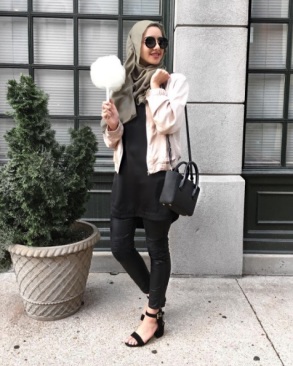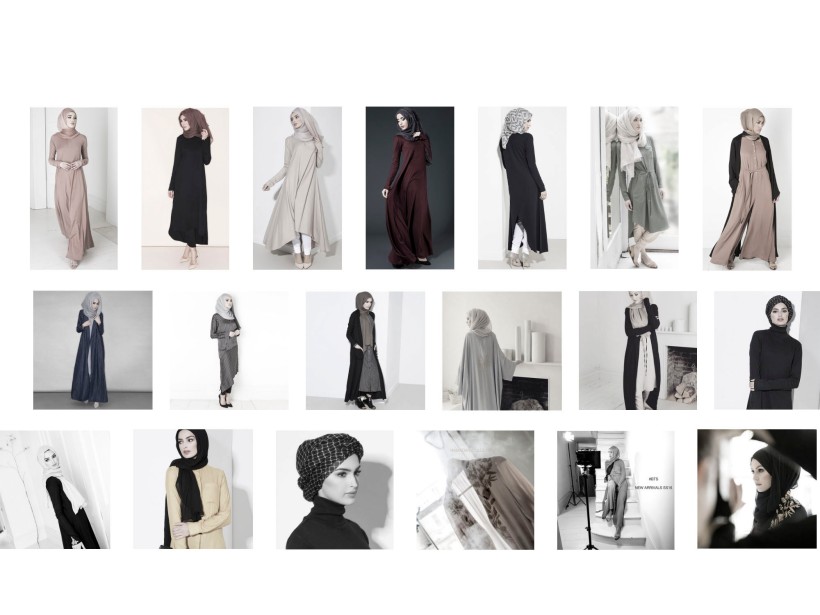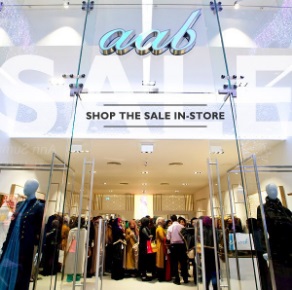Modest Fashion, A Thing of the Future?
Growing up as a ‘traditionally submissive‘ Muslim woman in the UK, I was constantly bombarded with Western fashion lines that didn’t cater to my religious needs. This lead to an over expenditure in different items of clothing pieced together to make a fully-covered and loose wardrobe. Far from being the minimalist Muslim, my love of fashion and not being able to find something suitable lead to piles of clothes that didn’t really get used.
Sufficed to say, I wasn’t the only one who noticed that there was a blaring gap in the fashion market.
The Modest Fashion Movement

A collaboration of Muslim instagrammers and vloggers – ranging from a background of fashion design, make-up artistry and in some cases, hijab styling – vented their frustration about the lack of diversity of fashion in the West.
To help young Muslim women like myself, some created Instagram profiles posting images of modest ensembles, while others recorded ‘how to make your own‘ videos; videos explaining how to make and create your own modest attire as an attempt to ease the fashion-lovers frustration in not being able to find outfits from mainstream retail shops.
Other Muslim women – similar to the creators of the modest line ‘Aab‘ – developed clothing lines exclusively based on modest fashion, aiming them to Muslim women in the West.
The collaboration of both Muslim designers and social media users sparked a movement in current fashion trends, helping in further shifting the ideologies of what is viewed as the latest fashion.
19-year-old Summer Albarcha shared her own photographs of modest outfits over Instagram and quickly built up a fan base. Starting in the year 2012, she now has over 200,000 followers that are regularly influenced by clothing from mainstream and high-street fashion brands that she has pieced together.
Speaking to Business of Fashion, she shared her opinion about modest fashion. “I really think religious dressing doesn’t have to look backwards or uniform, everyone has a different conception of what modesty is to them”.
A Profitable Renaissance
With a sudden interest in modest clothing by mainstream fashion lines, added to the list of Muslim instagrammers and vloggers that have made modest fashion current, it wasn’t until the numbers started to show about how big this industry really is.
Figures show that by 2019, the Muslim fashion industry will gross up to £327 billion. The amount Muslim women spend on clothes says much more about an existing gap in the market that is now slowly being saturated by mainstream designers who recognize that there is a need for modest fashion.
The modest fashion market – currently estimated to be worth £96 billion – is now being represented in western clothing lines across the mainstream fashion spectrum.
 This means that high-street fashion brands like Pret-A-Porter and D&G are releasing modest fashion wear in order to profit from a billion pound market between other modest fashion designers. Others are now following suit after realising that they are missing out on earning from a Muslim community that is so eager in spending.
This means that high-street fashion brands like Pret-A-Porter and D&G are releasing modest fashion wear in order to profit from a billion pound market between other modest fashion designers. Others are now following suit after realising that they are missing out on earning from a Muslim community that is so eager in spending.
Shelina Janmohamed – who is the vice president of and Islamic branding practice Ogilvy Noor – said to the Business of Fashion that “there are varying estimates of the Muslim population, but what we use is 1.8 billion, of which about 43 percent, so just shy of 800 million, are under 25”.
“Not only do you have more Muslims to target, but they are increasing in numbers faster and they are young. And, contrary to a lot of expectations, they are interested in brands and they are interested in asserting some kind of individuality through what they purchase”.
Breaking and Making Ideology Through Fashion
As fashion is now being influenced by a religion of modesty, the Muslim vloggers who helped push this modest fashion movement are also aware that they are portraying themselves as representatives of Muslim women.
These women have empowered other Muslims to be brave enough to say that they fully practice the faith of Islam, observe the head-covering while admitting that they have a love for fashion.
In doing so, they have broken the ideology of the Muslim woman who -according to the media – has no say in what she wears and in the religion itself.
Though these women are coming under constant scrutiny – both my Muslims and by non-Muslims through islamophobic attacks – are increasingly being noticed in within the fashion world.
These women – who are centered around fashion – are doing much more for the community than some may realise.
Apart from releasing their own fashion lines to the public and having an influence over western shops to release modest clothes to cater to the Muslim market, they have been able to break ideologies created by the media. They have supplied the public with another opinion on what Muslim women really stand for.





